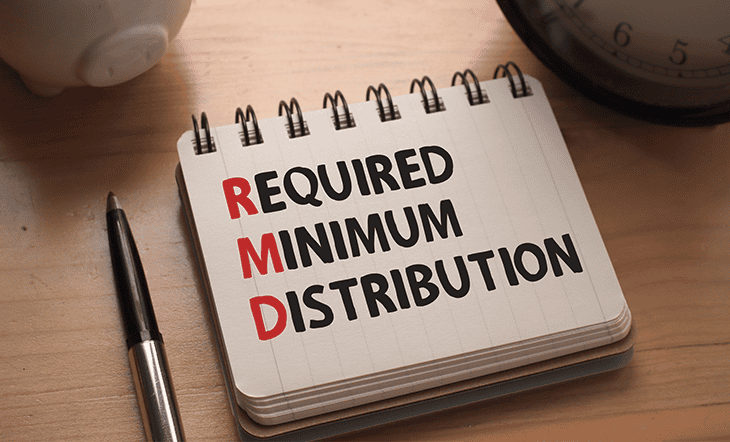Investing is a dynamic process that truly never ends. It starts with finding suitable investments for your financial goals, risk appetite, budget, income, etc. Then, it is about picking the proper method from systematic installments and contributions to lump sum investments. The withdrawal strategy is another significant aspect that requires time and consideration. This involves tax planning, taking cognizance of your future financial needs, and more.
However, there is one more step between all this that is equally important and needs to be undertaken periodically. While you may give a lot of time and thought when you build your own investment portfolio for the first time, ensuring that you review and evaluate it regularly after that, is as essential. Market conditions, political events, pandemics, demand and supply, corporate decisions, and other similar aspects can impact your investments and capital growth. If you take the 2020 pandemic, equity markets have taken a significant blow because of the global lockdowns. Many industries had taken a hit. Sectors like tourism had crashed entirely. However, investments like gold thrived, and sectors like pharmaceuticals saw favorable growth. The Russia and Ukraine conflict has shown a similar impact on the world economy very recently. Inflation has been high in many parts of the world. Oil prices have surged in the U.S and other countries. Times like these and many others call for the need to evaluate and reassess investment portfolios on an individual level.
Further, investments perform differently during different market cycles. Some investments may outperform their benchmark, while others may not. Fluctuations are expected in the stock market. However, consistently low returns across market cycles can be a cause of concern. All of these issues can be tackled if you know how to build a strong investment portfolio and review it regularly. If you require guidance on how to build and assess an investment portfolio to ensure that it aligns with your financial goals, consult with a professional financial advisor who can advise you on the same.
Read below for information more on how to build your own investment portfolio and the when the right time might be to reevaluate it:
How to create an investment portfolio
An investment portfolio is a combination of all your investments. It can include stocks, bonds, real estate, mutual funds, exchange-traded funds, index funds, international funds, and more. Every investor’s investment portfolio is unique and can have different investments that cater to the individual’s requirements and future goals.
Here are the 5 steps on how to build an investment portfolio:
1. Identify your financial goals:
The first step in building your portfolio is understanding your goals. Every person can have distinct goals. Moreover, your goals can change over time as you grow old. When you are single, you may be accumulating funds to travel. When you get married, your focus may change to purchasing a home. Parenthood can bring in more financial responsibilities, such as planning for your child’s college tuition. Retirement planning is another goal that requires preparation from the beginning of your career. No matter your goal and age, being clear about how you see your future can help you plan for it better. So, start by making a list of your financial objectives and assign a reasonable timeline to each.
2. Know your investment budget:
Your investment budget can be decided based on your income. If you are in a high-income bracket, you can invest in high-value investments, such as real estate, etc. However, if you are in a lower income bracket, you may consider options like mutual funds that offer the choice to invest in regular installments, a 401(k) retirement account, or an Individual Retirement Account (IRA) that offer annual contributions, etc. These can ease off the burden and help you build a corpus at a slower but steady pace.
3. Assess your risk appetite:
Risk appetite refers to your ability to take a risk. The younger you are, the higher the risk appetite. This is primarily because you have enough time to ride out market volatility and turn your losses into profits. The older you are or the closer you get to retirement, the lower the risk appetite. Your risk appetite can also be determined based on your income and goals. If you are single with a stable, high-paying job, no debt, and only saving for retirement, you can afford to take more risks. However, if you are providing for your spouse and children and have limited financial resources and no emergency fund, you may not be able to take as much risk.
4. Rebalance and review your portfolio:
Moreover, reviewing is also crucial if your investments are not performing as well as they should. For example, if your mutual funds are consistently performing lower than the benchmark and in comparison to other mutual funds of the same type and investing style, you may consider exiting the scheme and investing elsewhere.
The last step is a critical one to ensure that your investment portfolio aligns with your goals. However, it is essential to know when to reevaluate your investments.
When to reevaluate your stock portfolio
Typically, it may be advised to revisit your investment portfolio every six months to a year. However, there may be times when you may notice the following signs and may need to reevaluate:
1. You are not seeing any growth in your investments:
If your assets have not moved up as you expected and are not beating inflation, it may be time to take a closer look. This could be due to a number of reasons. You may have too many conservative choices like bonds, debt funds, etc., and not much equity. It could also be because your investments are not ideal for the prevailing market conditions. In this case, you may have to reassess your risk appetite and then rebalance your assets. If you are not too close to retirement, you can consider adding more stocks to your portfolio. Even though more volatile, stocks can offer higher growth compared to bonds and money market funds. You could do the same with your 401k or IRA portfolio. Further, you could consider investing in equity mutual funds. A financial advisor can help you pick suitable options that can push your portfolio towards better growth opportunities.
2. You have experienced changes in your personal or professional life:
Several life changes can be a reason for revisiting your investment portfolio. If you lose your job, you may have to liquidate some of your investments. This will impact your asset allocation. Further, if you unexpectedly suffer from an illness or disability, you may need to relook your finances. In this case, too, you could need more cash and may have to withdraw your funds. If you have a child, you would need investments with a high rate of return. You may also have to start investing in a 529 plan, buy insurance for your child, etc. If one spouse quits working and is unable to invest, the other would have to cover up by investing more aggressively. All of these changes can lead to more required adjustments and would need to be accommodated when you build your own investment portfolio or rebalance it.
3. You want to plan your taxes at the end of the financial year:
A lot of people rebalance their assets at the end of the financial year, depending on their tax situation. You may pay a higher income tax if you do not have suitable tax-saving investments in your portfolio. The end of the financial year is the perfect time to reflect and revisit your portfolio.
Likewise, changes in tax laws can also present the need to revisit your choices. If there are government tax benefits for a specific account or fund, you may consider adding it to your list of investments.
4. Your portfolio is very volatile:
If your portfolio is too volatile, you may have a higher concentration of stocks and other similar high-risk, speculative investments with very few bonds, cash, or cash equivalents. It is essential to ensure that your portfolio is well-diversified. If you are only investing in highly speculative investments like cryptocurrencies, NFTs, and the like, you may experience extreme highs and lows. While this may be suitable for certain investors, it can add a lot of stress to beginners and investors who lack the necessary experience in trading or investing in high-risk options. You may add these options as they present the potential for massive highs. But it is vital to understand the repercussions and balance out the uncertainty with some low-risk, steady return options.
5. There are sudden movements in the market:
Any market event triggered by an unexpected global, political, business, or natural event can affect the stock market. This may be an excellent time to check how your portfolio is performing. For instance, if equities have taken a hit, you may consider rebalancing with debt options, gold investments, and others.
6. Reevaluate your portfolio once or twice every year:
As discussed above, reevaluating your portfolio is an ongoing process. You can fix a time in your calendar and make sure to review your investments then. This could be annual, half-yearly, or quarterly, depending on your portfolio and requirements. Marking a time for reevaluation ensures there are no lapses and helps bring more financial discipline to your planning process.
How to balance your investment portfolio
Here are some tips to keep in mind when you balance your portfolio:
1. Take it easy:
Do not be overwhelmed with how your portfolio fluctuates every day. The market is a highly dynamic space. Your investments are bound to experience highs and lows. If you are on constant watch every day, you may feel stressed. This can lead to financial anxiety, hasty decisions, and panic selling or buying. Taking a long-term view is considered to be more financially prudent. It is vital to give your investments time to garner returns. See if your investments are consistently underperforming or merely reacting to a particular event, and then make a call. Normally, rebalancing your portfolio quarterly, half-yearly, or yearly can suffice for most investors. You can contact a financial advisor to get more information on this.
2. Diversify your portfolio:
Too much of anything can ultimately be risky. Therefore, try to keep a balance of different asset classes based on your risk appetite. High stock exposure can lead to volatile performances at intervals. This may or may not suit your profile and goals. However, low stock exposure can stall your growth. So, make sure that you ensure optimal diversification and are able to maintain your risk appetite.
3. Keep a mix of tax-efficient options:
Your overall returns are as effective as the tax levied on them. If you pick tax-advantaged investments, you can save money and enjoy your returns wholly. Make sure to understand the tax liabilities of every investment you choose.
4. Consider the costs:
Investments with high expense ratios bring your portfolio’s value down. The overall cost-effectiveness of your portfolio is an important area to keep an eye on. You can include investments that cost less and exclude the ones that are expensive to maintain. However, it may be advised to consider other aspects like returns, performance, etc., and then decide.
To summarize
The key to investment success is to keep a portfolio that you can connect with. If your investments reflect your needs and goals and are in sync with your risk appetite and budget, you can live with more peace of mind. External forces may cause slight digressions but can be handled with portfolio reevaluation at the right time. If you need professional help for the same, you can consider reaching out to a financial advisor. Questions like “how can I rate my portfolio and rebalance it” can be better answered by a professional. Use Paladin Registry’s free advisor match tool and get matched with 1-3 qualified advisors who may be able to help you with your unique financial goals and requirements.
For additional information on how to make the most suitable investment portfolio for your unique financial needs and requirements, visit Dash Investments or email me directly at dash@dashinvestments.com.
About Dash Investments
Dash Investments is privately owned by Jonathan Dash and is an independent investment advisory firm, managing private client accounts for individuals and families across America. As a Registered Investment Advisor (RIA) firm with the SEC, they are fiduciaries who put clients’ interests ahead of everything else.
Dash Investments offers a full range of investment advisory and financial services, which are tailored to each client’s unique needs providing institutional-caliber money management services that are based upon a solid, proven research approach. Additionally, each client receives comprehensive financial planning to ensure they are moving toward their financial goals.
CEO & Chief Investment Officer Jonathan Dash has been covered in major business publications such as Barron’s, The Wall Street Journal, and The New York Times as a leader in the investment industry with a track record of creating value for his firm’s clients.
Other posts from Jonathan Dash
Things You Should Know About RMDs if You Are Turning 73
Retirement accounts like the 401(k) and the Individual Retirement Account (IRA) are broadly classified as traditional, and Roth based on their taxability....
Should You Keep Your Money with Your Employer’s 401(k) Plan After You Retire?
One critical financial decision looms large as you approach retirement - how does a 401(k) work when you retire?...
6 Reasons Your Retirement Plan Might Change and How to Prepare For it
Planning for retirement is an essential part of securing a financially stable future. It can help you live...




